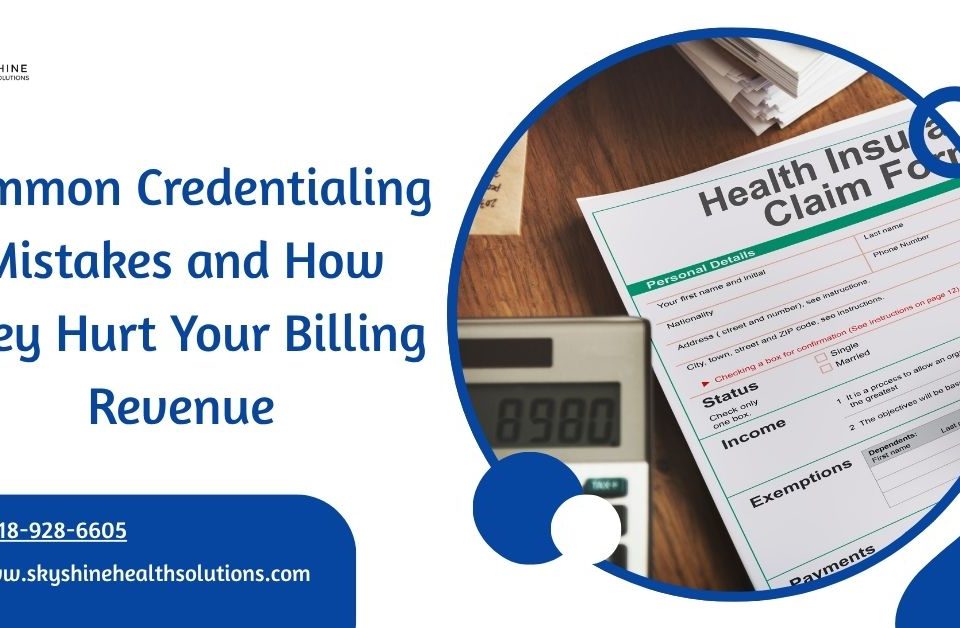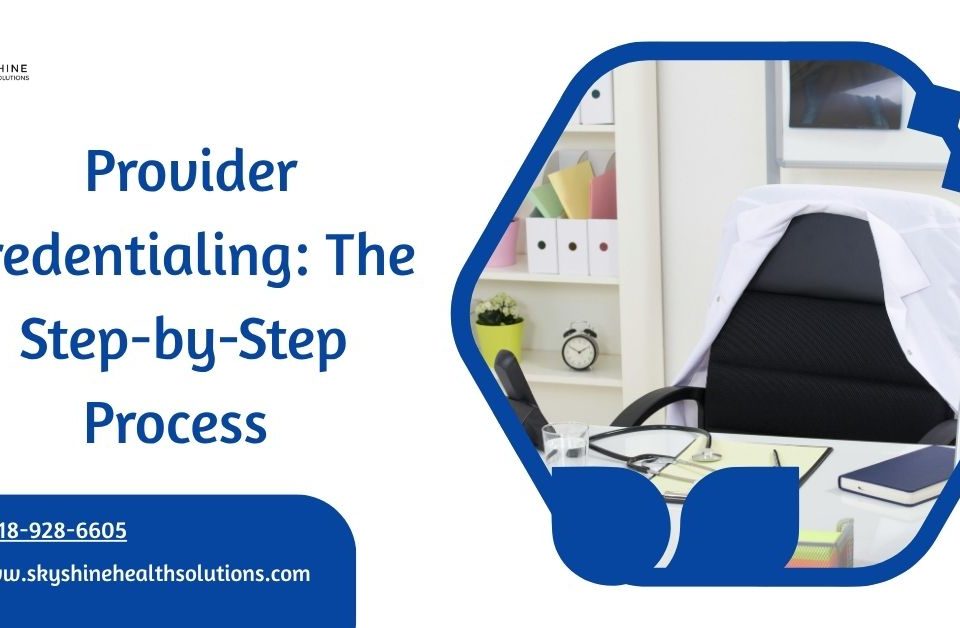
Understanding the Revenue Cycle Management (RCM) Process
May 22, 2025
Handle Insurance Rejections & Denials in Billing (2025)
May 26, 2025Navigating the medical billing process can be daunting for healthcare providers and billing staff, but understanding each step ensures accurate reimbursement and compliance. In this guide, we’ll break down the medical billing process into clear, actionable steps for 2025, helping you streamline operations and reduce errors. Whether you’re a seasoned professional or new to billing, this step-by-step guide will empower you to master the process efficiently.
What Is the Medical Billing Process?
To begin, the medical billing process involves submitting and following up on claims with insurance companies to receive payment for healthcare services. Moreover, it requires precision to meet payer requirements and avoid denials. Let’s dive into the key steps to make this complex process manageable.
Step 1: Patient Registration
First, collect accurate patient information during registration. This includes:
-
-
-
Full name, address, and contact details
-
Insurance information (policy number, payer details)
-
Demographic data (date of birth, emergency contacts) For example, incorrect details, like a misspelled name, can lead to claim rejections. Therefore, verify insurance eligibility and coverage before services are rendered.
-
-
Step 2: Insurance Verification
Next, confirm the patient’s insurance coverage. This step is crucial because:
-
-
-
It ensures the services are covered by the payer.
-
It identifies any need for prior authorization.
-
It prevents unexpected patient bills. For instance, checking coverage upfront avoids denials due to expired policies. Thus, use electronic verification tools or contact the payer directly.
-
-
Step 3: Medical Coding
Once services are provided, translate the healthcare services into standardized codes. Specifically:
Step 4: Charge Entry
After coding, enter the charges into the billing system. This involves:
-
-
-
Assigning costs to each coded service.
-
Ensuring charges align with the payer’s fee schedule.
-
Verifying patient details match the claim. As a result, precise charge entry prevents delays. For example, mismatched data can lead to rejections, so review entries carefully.
-
-
Step 5: Claim Submission
Now, submit the claim to the insurance payer. This can be done:
-
-
-
Electronically via a clearinghouse for faster processing.
-
Manually, though this is less common in 2025 due to efficiency concerns. Because payers have strict deadlines (e.g., 12 months for Medicare), submit claims promptly. Additionally, ensure claims are “clean” (error-free) to avoid rejections.
-
-
Step 6: Payment Posting
Once the payer processes the claim, payments and explanations of benefits (EOBs) are received. In this step:
-
-
-
Post payments to the patient’s account.
-
Review EOBs for discrepancies or partial payments.
-
Identify denials or rejections for follow-up. For instance, a denial due to missing documentation requires immediate action. Thus, track payments diligently to maintain accurate records.
-
-
Step 7: Denial Management
If a claim is denied or rejected, act quickly to resolve it. Follow these steps:
-
-
-
Review the denial reason via the EOB or Electronic Remittance Advice (ERA).
-
Correct errors (e.g., coding mistakes) and resubmit for rejections.
-
Prepare an appeal with supporting documentation for denials. Since timely appeals are critical (often within 30–45 days), set up denial tracking systems. Moreover, analyze patterns to prevent recurring issues.
-
-
Step 8: Patient Billing
After insurance payments, bill patients for remaining balances (e.g., copays, deductibles). This includes:
-
-
-
Sending clear, itemized statements.
-
Offering payment plans if needed.
-
Communicating transparently about uncovered services. For example, explaining charges in simple terms builds trust. As a result, patients are more likely to pay promptly.
-
-
Step 9: Reporting and Follow-Up
Finally, generate reports to monitor billing performance. This involves:
-
-
-
Tracking claim submission and payment rates.
-
Identifying denial trends for process improvements.
-
Ensuring compliance with 2025 regulations (e.g., Medicare, Medicaid rules). By regularly auditing claims, you can catch errors early. Consequently, this improves revenue cycle management.
-
-
Tips to Optimize the Medical Billing Process
To enhance efficiency, consider these best practices:
-
-
-
Use Billing Software: Automate coding and claim submission to reduce errors.
-
Train Staff: Ensure your team is updated on 2025 coding and payer rules.
-
Conduct Audits: Regular internal audits catch issues before they escalate.
-
Stay Informed: Monitor CMS updates for changes in billing regulations. By implementing these strategies, you’ll streamline the medical billing process significantly.
-
-
Final Thoughts
Ultimately, the medical billing process is complex but manageable with a structured approach. By following these steps—patient registration, insurance verification, coding, and more—you can ensure compliance, minimize denials, and maximize reimbursement in 2025. Ready to optimize your billing? Download our free 2025 Medical Billing Checklist to get started!

Learn more on Medical Billing: Navigating Medicare and Medicaid Rules
For more details, visit Skyshine Health Solutions















